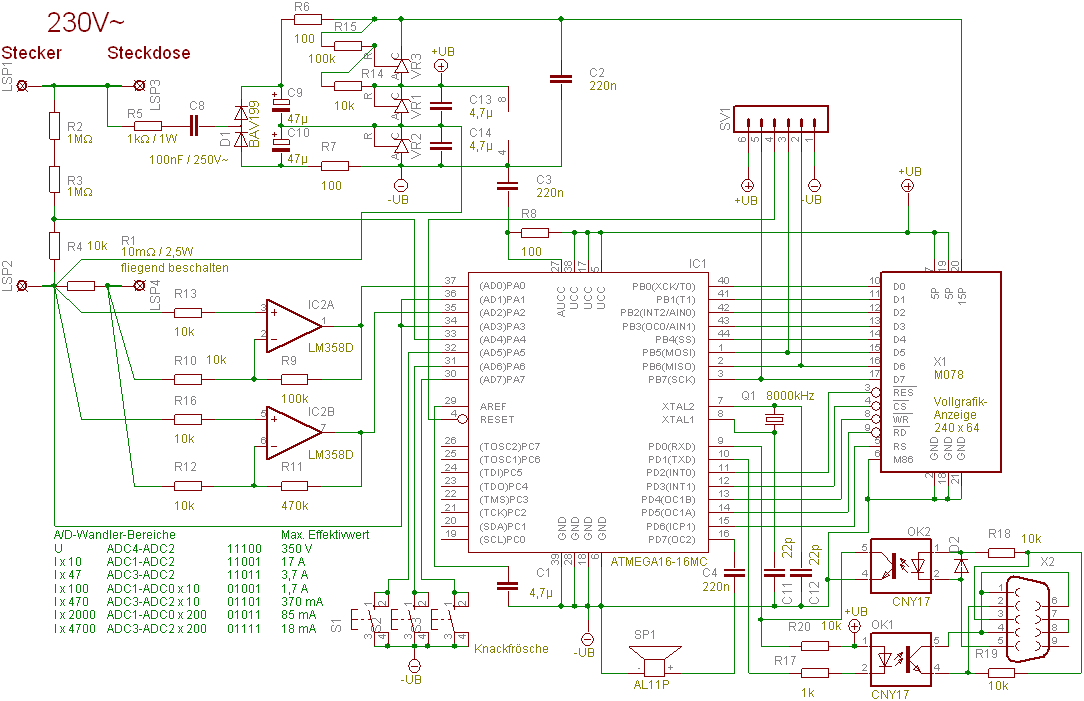
This implementation study or a versatile power meter for single-phase 110 .. 240 V AC has low efford and useful precision (10 bit). Using some digital signal processing, values like apparent power, reactive power, power factor, total harmonic distortion, true RMS, real and apparent energy, and a spectral analysis can be shown. The pivotal point is a power-connected ATmega16 microcontroller with an inexpensive full-graphic display.
The wide current range is realized using a single shunt resistor and the built-in gain-switchable differential amplifiers of the ATmega16 controller. Two operational amplifiers deliver useable input voltages for the controller.
There is also a PC interface for data acquisition via optocouplers.

The microcontroller is operated with 5 V supply, symmetrical ± 2.5 V. The power supply is fed from the 50/60 Hz mains supply using a capacitor.
To the differential voltage inputs ADC1-ADC0 and ADC3-ADC2 the instantaneous current measured, at the entrances ADC4-ADC2 this voltage. The two operational amplifiers (preferably true rail-to-rail amps with low offset drift) amplify the voltage across the shunt to the Factor of 10 or 47th. This result - together with the MCU-internal gain selection (× 1, × 10 or × 200) - six current ranges. For data display there is that graphic LC-display with 240 × 64 pixels. Three buttons are added to select functions and to reset the energy meter. This all fits in a housing with plug and socket.
Transmitting analog signals over a potential barrier is a rather complicated and error-prone process! It is therefore better to use two microcontrollers to have digital signaling over the barrier.
Operation on the primary side has the following advantages:
Yeah, energy cost control devices do the same thing and have the same working principle. More elaborate devices come with RF data transmission but unknown frequency+protocol for PC data capturing.
However, self-made devices can more than those commercial, e.g. power spectrum measurement.